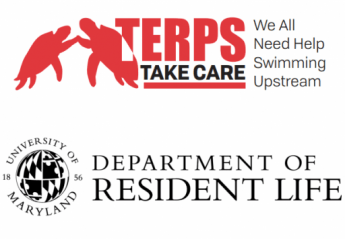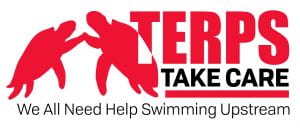Been feeling down this winter? Seasonal affective disorder – often referred to as SAD or “the winter blues” – is pretty common. Luckily, Terps have access to free Light Therapy Devices! Sarah Wilson, Coordinator for Health Promotion & Wellness Services at the University Health Center, is here to tell us more.
TTC: Sarah, we are so thrilled to have you back and interviewing with us again – and promoting a totally different program, this time! We’re so excited to learn more about light therapy, how it can help terps, and how our community can access these services. Let’s get started! For those who may not have read your other interviews with us, set the stage by telling us how your office supports the overall wellness of UMD students – and then maybe give us a little detail on light therapy, too?
- SW: Wellness is the backbone of our Health Promotion & Wellness Services unit.Our team aims to promote the holistic wellbeing of students through comprehensive and collaborative programming, peer education, sharing of accurate and relevant health information and resources, and providing empathic wellness consultations and coaching for the campus community. We recognize that how we think about wellness is affected by our culture and our life experiences. We strive to support inclusive, accessible, and diverse health and wellness opportunities.One such resource is light therapy, or phototherapy. This is the use of a specific device, designed to treat changes in mood that are especially common during the darkest season of the year in climates far from the equator. Light therapy is a well-established treatment, with thorough scientific research, for Seasonal Affective Disorder, or the “winter blues”. Though, there is also evidence that it can also be beneficial when people’s mood is low for other reasons.
Light therapy works by impacting the neurotransmitters in the brain. Most people who use light therapy regularly will experience benefits within the first one to two weeks of use.
TTC: This is really awesome, Sarah. Could you share with us some tips for using a light therapy device?
- SW: Position the device at a 45 degree angle from the direction you are gazing, kept on a desk or side table at a height that allows the device to bathe your face in light.Do not stare direction at the light.
Use the device in the morning, and avoid use in the afternoon. Using the device too late can interfere with sleep.
When you first start using the device, start with 5-10 minutes, and then adjust from there. Most people use the device for 15-45 minutes.
If you feel uncomfortable, irritated, or experience a headache, try using the device at a lower setting, placing it further away from you, and/or use for a shorter period of time.To get the most out of light therapy:
Be consistent: As much as possible, attempt to stick to a routine. Consistency helps support the mood changes you may be looking for while utilizing light therapy. If you aren’t sure where to start, email me, Sarah Wilson, at wilson72@umd.edu.
Include other treatment: If your symptoms aren’t improving enough with light therapy, talk with someone at the Health Center about additional ways to support your mental health and wellness. Again, you are welcome to email me at wilson72@umd.edu.
TTC: This is a lot of great information, Sarah. I’m so glad we have this option available for Terps who hit a rough patch in winter, and I’m so glad they have you to help them. Now, how can students access these devices?
- SW: Students have two options for utilizing light therapy for free on campus.First, light therapy lamps are available for loan at the Tech Desk of Terrapin Learning Commons in McKeldin Library. The lamp can be used on either a table or a desk and is available for one hour, for use within McKeldin Library.Alternatively, a student is also able to take a light therapy device home with them with a referral from the University Health Center. Students can obtain a referral by making an appointment with me (email wilson72@umd.edu). The referral can then be taken to the Tech Desk of Terrapin Learning Commons and is available for a 28 day check-out.
TTC: That sounds super-easy, all things considered! Is there anything else about light therapy that you think students should know?
- SW: People with a history or family history of bipolar disorder, cyclothymia, or mania and individuals taking any psychoactive (including antidepressants) or photosensitizing medications, should consult with a mental health care provider prior to use, and contact their provider immediately if irritability, reduced sleep, or other side effects occur.People with eye conditions, such as macular degeneration, should consult their healthcare provider before use; this device may accelerate the rate of age-related macular degeneration, similar to any source of bright white or blue light, including the sun.
People who are sensitive to fluorescent light will also likely experience sensitivity to these devices.
TTC: That’s all very good to know. So how about you – got any other tips? What do you do to maintain your own wellbeing during these cold and dark winter months?
- SW: I’m currently supporting my mental health and wellness through movement. Sometimes this is yoga, sometimes it is cycling, and sometimes it is barre or pilates. Movement helps me channel my emotions and decompress.Now that it is getting colder, I’m also making intentional decisions to still get outside and take short walks. I have a natural tendency to avoid the cold whenever I can, but I also know I feel better when I spend some time outside in nature.

